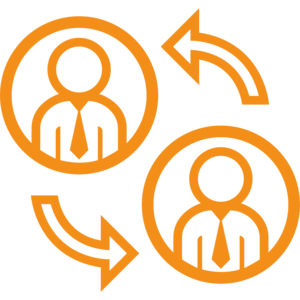Quick-Change Artists

Goal
Materials
Instructions
Flow
Ask the participants to select three people. Tell the participants that they are going to undertake a thought experiment. Ask each participant to think of three people who handle major changes with composure—and even seem to thrive under constant turbulence. These role models could be public figures, colleagues, friends, family members, or fictional characters. Reassure the participants that they do not have to reveal the identity of these people to anyone else.
Ask the participants to identify flexibility factors. Invite the participants to think what makes these three people so agile and adaptive. Ask them to make a list of the flexibility factors on a piece of paper. Point out that some of these factors could be common to all three or they could be specific to one or two of the selected people. Announce a 3-minute time limit for this activity.
Ask the participants to select three other people. This time, tell the participants to select three people who cannot cope with even the smallest change and who become agitated by the slightest discrepancy. As before, these role models could be public figures, colleagues, friends, family members, or fictional characters. Once again, reassure the participants that they do not have to reveal the identity of these people to anyone else.
Ask the participants to identify the rigidity factors. Invite the participants to think about what makes these people break down at the slightest change. Ask them to make a list of these factors on a piece of paper. Announce a 3-minute time limit for completing this task.
Distribute playing cards. Give a random playing card to each participant. Make sure to distribute equal numbers of black and red cards. (If you have an odd number of participants, you may give one more card of either red or black colour.)
Pair up with a partner. Ask the participants to pair up with someone who has a card of the different colour. If one participant is left over, ask him or her to pair up with you.
Discuss coping and collapsing factors with the partner. Ask the participants to share the flexibility factors they had identified in the first thought experiment. Ask them also to discuss the rigidity factors. Announce a 3-minute time limit for this activity.
Form a team. Blow a whistle at the end of 3 minutes. Ask the participants to say “Goodbye” to their partners and to form a team of three to five people who have playing cards of the same colour (red or black).
List Do's and Don't-s. Distribute a sheet of flip-chart paper and a felt-tipped marker to each team. Instruct the team members to share their ideas and to prepare a list of do's and don't-s for increasing the ability to thrive under continuous change. Announce a 5-minute time limit for this activity.
Review lists from other teams. Blow the whistle at the end of 5-minutes. Ask the teams to attach their posters on the wall with pieces of masking tape. Invite the participants to review the posters from the other teams to discover common items and unique ones. Announce a 3-minute time limit.
Debriefing
Discuss the items from the posters. At the end of 3 minutes, blow the whistle and assemble the participants for a debriefing discussion. Conduct this discussion by asking questions similar to these:
- Which flexibility factor appeared in most posters?
- Which factor is unique to a single poster?
- Which factor is most frequently neglected in your professional life?
- Which factor can produce the most increase in the flexibility level for you?
Prepare an action plan. Invite each participant to individually select one of the flexibility factors for immediate action. Ask the participants to prepare a plan for applying this factor to increase their ability to flourish under changing circumstances. If time permits, ask the participants to pair up with a new partner and share their application ideas.
Attachments
- noun_1074063_F38F19.png
Background
Source: Thiagi Group